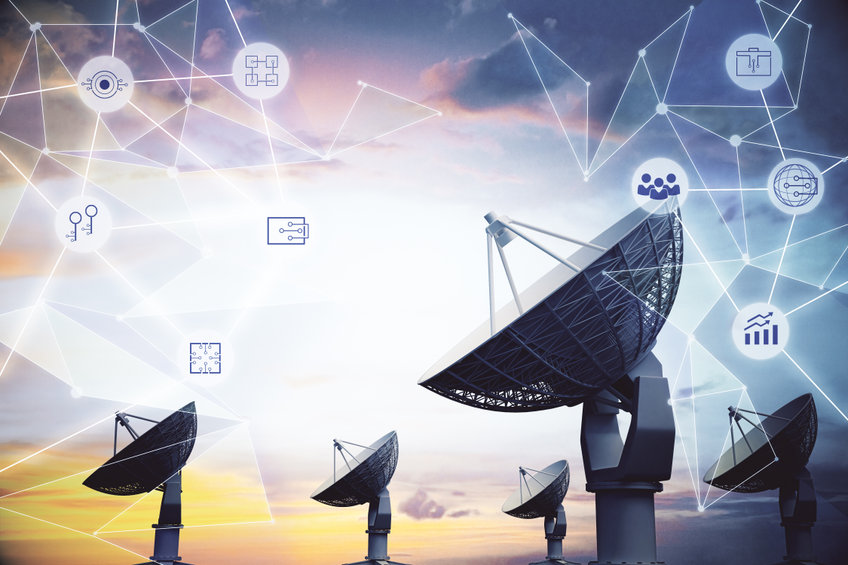Fiber optic internet is here to stay. All the underground conduits run across continents, cities and data centers will remain fiber. All the pipes that connect the major points of access to the thousands of distribution points are now fiber and will remain so for a long time.
At present, fiber optic internet has gained the favor and approval of many internet subscribers. The internet service providers’ (ISPs) innovations, likewise, ensure that they keep up with the demands of their consumers. However, satellite internet is also catching up with the demands of modern technology. This type of internet access is significant to providing internet access in rural areas telecom cables and wires could not reach.
Fiber and satellite internet: A cursory look
Fiber internet has gained approval from many internet subscribers due to its speed and reliability. However, in far rural areas where broadband internet is inaccessible, internet from the sky is indispensable.
More countries have moved toward fiber-optic broadband. The use of satellite-broadband is becoming rare. Laying fiber-optic lines to homes is expensive, but telecommunication companies are coping with the change.
Meanwhile, efforts to provide broadband internet via satellite remain.
Satellite internet is unbounded by ground infrastructure. It is the fastest way of providing internet access, particularly to rural areas or parts of the world where cabling is challenged.
Fiber and satellite internet: Difference in infrastructure
“Fiber” refers to the thin plastic or glass wires encapsulated by a protective cable. “Optic” refers to the manner of data transfer.
Fiber optic internet transfers data partially or fully via fiber optic cables by sending light signals through the fibers.
Meanwhile, satellite communication uses artificial satellites between transmitter and receiver in different locations and directions.
Internet connection via satellite is delivered through telephone lines.
These telephone lines are made of copper wires. And while copper is a good conductor, data cannot travel through it as quickly as in fiber optics.
Fiber and satellite internet: A quick comparison
Internet Speed
Satellite internet has more latency than fiber internet. That means a slight delay happens between an action performed and seeing the expected result.
Satellite internet is sufficient for activities like the web and sending and receiving emails. It does not perform well with online gaming or live streaming, where more bandwidth is required.
Upload and download speeds are slow for satellite internet.
Fiber internet, meanwhile, is compatible with activities that require more bandwidth. Live streaming and online gaming are not interrupted with fiber optic internet connection.
A single link can also support multiple devices used simultaneously.
Reliability
More interference is experienced when using a wireless internet connection or satellite internet.
Weather conditions, such as thunderstorms and lighting, can also affect the reliability of satellite internet.
Other obstructions like buildings and trees also compromise the strength of signal and reliability of satellite internet connection.
The reliability of fiber internet is not affected by weather conditions that usually affect satellite connections. Fiber optic cables are buried deep in the ground. In case of thunderstorms, lightning, rain or even wildlife, these cables can continue to perform effectively.
Availability
In terms of availability, satellite connection is easy to access anywhere since it has no cables or wirings.
The signal comes from outer space and can be picked up by any device almost anywhere. In some remote areas, the satellite is the primary source of communication.
In contrast, fiber optics may not be available in some areas.
Fiber optics cannot be made available in some regions where the terrains are complex and laying cables and wires is impossible.
Service cost
In some areas, satellite internet may be more expensive, especially in remote locations.
Compared to other internet types offering the same speed, satellite internet tends to be expensive in most places.
Fiber internet can be more affordable, depending on the ISP. Internet providers also offer competitive package options you can choose from depending on your needs.
Conclusion
The current fiber internet has top speeds measured in Gbps (GigaBytes per second), one billion bytes per second. Yet, studies suggest that existing fiber cabling can still transmit or carry far more data than measured.
Researchers are continuously developing new ways to increase bandwidth.
Fiber optics will be more beneficial to increasingly sophisticated devices, user populations and more complex procedures.
The telecommunications industry has a crucial role to play. Competitiveness is healthy so that telecom companies will cope with innovations.
So far, fiber optic cables do not seem to degrade compared to copper-based infrastructures. So, it is more likely that fiber optic internet will outlast the copper-based satellite internet system in time.

